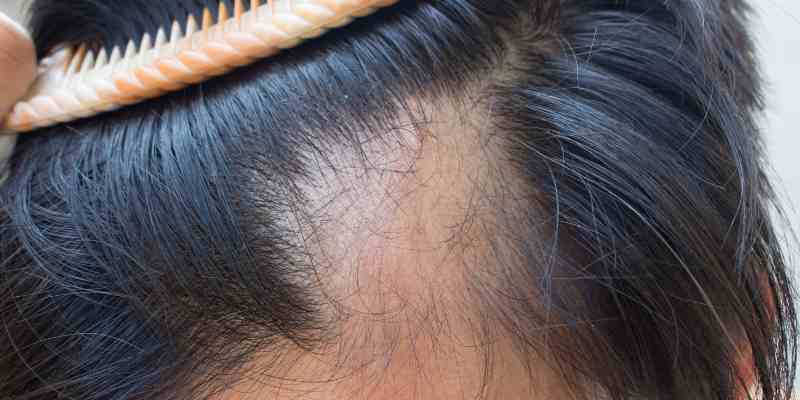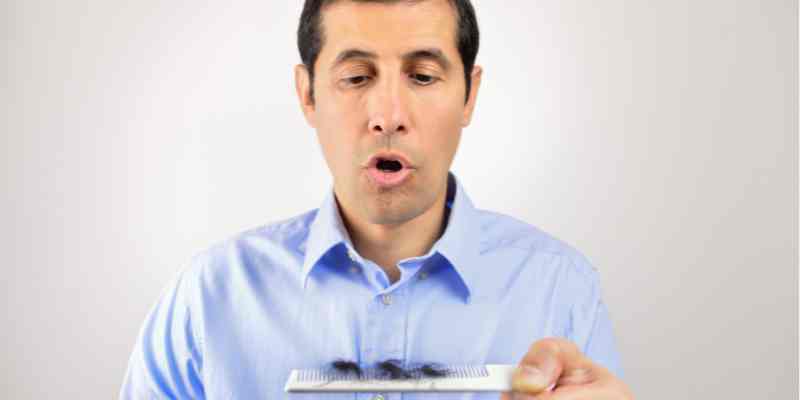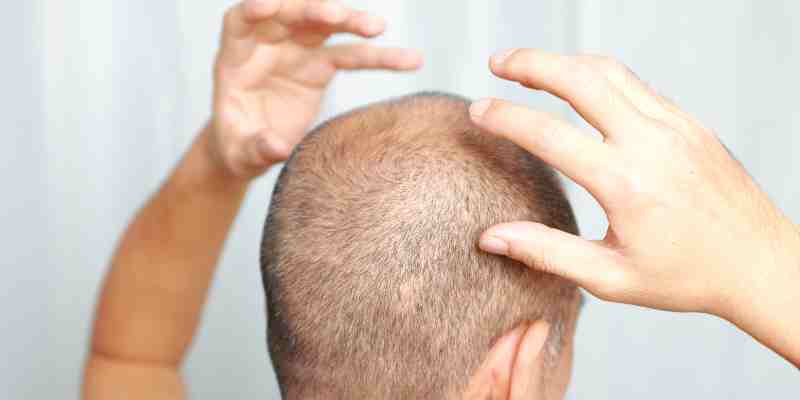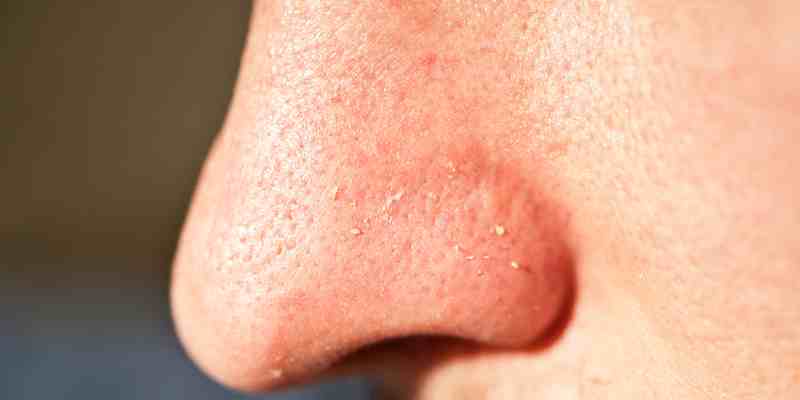Hair is an essential part of our appearance and plays a significant role in defining our overall beauty. Whether it’s long or short, curly or straight, our hair adds to our unique identity and helps us express ourselves. Our hair is an extension of our personality and style, and it’s no wonder we invest so much time and money to keep it looking its best.
Beyond just aesthetics, our hair serves several important functions that contribute to our health and well-being. Hair plays a crucial role in our day-to-day lives, from protecting our scalp to regulating body temperature.
But this blog is not about the importance of hair in our lives. On the contrary, it’s about a serious problem related to hair. And regardless of gender, many humans is prone to it.
We are discussing temple hair loss today. According to a study published in the International Journal of Trichology, temple hair loss accounts for around 15% of all cases of hair loss in India. Another study published in the Indian Journal of Dermatology estimated the prevalence of frontal fibrosing alopecia to be around 1.7% among women in India.

Read more about What Is Keratin And Why Is It Good For Your Hair?
If you are suffering from temple hair loss, or want to know more about the same, this blog is for you. Here we will discuss the root causes of temple hair loss, how to deal with it, and how to prevent temple hair loss.
So without further ado let’s get deeper into it!
WHAT IS TEMPLE HAIR LOSS?
Temple hair loss, also known as frontal fibrosing alopecia, is a type of hair loss that affects the hairline and temples. This condition is most commonly seen in postmenopausal women, but it can also affect men and women of any age.
It is a scarring hair loss condition, which means that it involves the destruction of hair follicles and the replacement of healthy hair follicles with scar tissue. This can lead to a gradual recession of the hairline and thinning of hair in the temple area.
WHAT ARE THE ROOT CAUSES OF TEMPLE HAIR LOSS?
Temple hair loss is most commonly seen in postmenopausal women, but it can also affect men and women of any age. While the exact causes of temple hair loss are not fully understood, research suggests that it may be related to a combination of genetic, hormonal, and environmental factors.
Genetic Factors
Studies suggest that temple hair loss may have a genetic component. In other words, if you have a family history of hair loss, you may be more likely to develop temple hair loss yourself. However, not everyone who has a genetic predisposition to hair loss will necessarily experience it.
Read more about How to Regrow Thicker Hair Naturally?
Hormonal Factors
Hormonal imbalances may also play a role in temple hair loss. Researchers have found that women who have higher levels of androgens, such as testosterone, are more likely to experience hair loss. This may be due to the fact that androgens can cause hair follicles to shrink and eventually stop producing hair.
Autoimmune Disorders
There is evidence to suggest that temple hair loss may be associated with autoimmune disorders, such as lupus and thyroid disease. In these conditions, the body’s immune system mistakenly attacks healthy cells, including hair follicles, leading to hair loss.
Environmental Factors
Environmental factors, such as stress, poor nutrition, and exposure to certain chemicals, may also contribute to temple hair loss. For example, studies suggest that stress can cause an increase in androgen levels, which can lead to hair loss. Similarly, a diet that is low in nutrients, such as iron and vitamin D, may also contribute to hair loss.

Read more about What Is Finasteride? The Use of Finasteride for Hair Loss
Aging
As we age, our bodies undergo a number of changes, including changes in hormone levels. For postmenopausal women, a decrease in estrogen levels may contribute to hair loss. Additionally, as we age, the hair follicles can become less efficient at producing hair, leading to thinning and loss of hair.
Top of Form
Bottom of Form
HOW TO TREAT TEMPLE HAIR LOSS WITH MEDICATION?
While there is no cure for temple hair loss, there are several medications that may be effective in slowing down or even reversing hair loss. In this blog, we will explore some of the medicines commonly used to treat temple hair loss.
- Topical Corticosteroids: Topical corticosteroids are a type of medication that can help to reduce inflammation and slow down the progression of temple hair loss. These medications are applied directly to the affected area and can be effective in reducing redness, itching, and scaling. However, long-term use of corticosteroids can have side effects, such as thinning of the skin and increased risk of infection.
- Oral Corticosteroids: Oral corticosteroids may also be used to treat temple hair loss. These medications are taken by mouth and work by reducing inflammation throughout the body. However, long-term use of oral corticosteroids can have significant side effects, such as weight gain, high blood pressure, and increased risk of infections.
- Hydroxychloroquine: Hydroxychloroquine is a medication that is commonly used to treat autoimmune disorders, such as lupus and rheumatoid arthritis. It may also be effective in treating temple hair loss by reducing inflammation and suppressing the immune system. However, it can have side effects, such as eye problems and gastrointestinal issues.
- Finasteride: Finasteride is a medication that is commonly used to treat male pattern baldness, but it may also be effective in treating temple hair loss. This medication works by blocking the production of dihydrotestosterone (DHT), which is a hormone that can cause hair loss. However, finasteride can have side effects, such as decreased libido and erectile dysfunction.
- Dutasteride: Dutasteride is a medication that is similar to finasteride in that it works by blocking the production of DHT. While it is not approved by the FDA for the treatment of hair loss, some doctors may prescribe it off-label for this purpose. However, dutasteride can have side effects, such as decreased libido and breast tenderness.

HOW TO TREAT TEMPLE HAIR LOSS WITH COSMETIC TREATMENTS
There are several cosmetic treatments available that can help to slow down or even reverse hair loss. In this blog, we will explore some of the most effective cosmetic treatments for temple hair loss.
Platelet-rich plasma (PRP) Therapy

PRP (Platelet-rich plasma) therapy is a popular treatment option for temple hair loss. This treatment involves injecting a concentrated solution of the patient’s own platelets into the affected areas of the scalp. PRP contains growth factors that can stimulate hair growth and promote healing in the scalp. Here are some of the pros of PRP therapy for the treatment of temple hair loss:
- Non-invasive: PRP therapy is a non-invasive treatment that does not require any surgery or incisions. It is a minimally invasive procedure that can be performed in a dermatologist or hair specialist’s office.
- Natural: PRP therapy uses the patient’s own blood plasma, which is a natural substance. This means that there is no risk of rejection or allergic reaction.
- Safe: PRP therapy is a safe procedure with few side effects. The most common side effect is mild discomfort at the injection site, which usually goes away within a few hours.
- Effective: PRP therapy has been shown to be an effective treatment for temple hair loss. It can help to stimulate hair growth and increase the thickness of existing hair.
- Fast: PRP therapy is a fast treatment that usually takes less than an hour to complete. Patients can resume their normal activities immediately after the procedure.
- Long-lasting: PRP therapy can have long-lasting results. Patients may require multiple treatments to achieve the desired results, but the effects of PRP therapy can last for up to a year or longer.
Read more about How to Grow Hair Faster?
Hair Transplantation

Hair transplant surgery can be an effective solution for temple hair loss. The procedure involves taking good hair follicles from a donor site, typically at the back or sides of the head, and transplanting them to the temples.
There are two main techniques for hair transplantation: follicular unit transplantation and follicular unit extraction.
Both techniques can be used to transplant hair to the temples, and the choice of technique will depend on the individual patient’s needs and preferences.
Here are some of the benefits of hair transplantation for the treatment of temple hair loss:
- Permanent results: Hair transplantation offers a permanent solution to hair loss.
- Natural-looking results: Hair transplantation can produce natural-looking results that blend seamlessly with your existing hair.
- Safe and proven treatment: Hair transplantation has been used for decades to treat hair loss, and is a safe and effective treatment option when performed by a qualified surgeon.
- Minimal downtime: While the recovery period after hair transplantation can vary depending on the individual, most people are able to return to work and other activities within a few days to a week after the procedure.
- Boost in confidence: Hair transplantation can have a significant impact on a person’s self-esteem and confidence, restoring a sense of youthfulness and vitality to their appearance.
Scalp Micropigmentation

Scalp micro pigmentation is a non-surgical hair loss treatment that involves tattooing the scalp to create the appearance of hair follicles. It can be an effective option for temple hair loss, as it can create the appearance of a fuller hairline by adding density and definition to the temple area.
During the SMP procedure, a trained practitioner uses a specialized tattooing tool to create tiny, precise dots on the scalp. These dots are strategically placed to mimic the appearance of hair follicles and create the illusion of a fuller hairline.
SMP is a relatively safe and low-risk procedure, and it can be completed in just a few sessions. The results are long-lasting, with many patients reporting that their SMP lasts for several years before requiring touch-up treatments.
Here are some of the benefits of SMP:
- Natural-looking results: When performed by a skilled practitioner, SMP can create the appearance of a fuller, more natural-looking hairline. This can be especially beneficial for people who have experienced hair loss due to conditions like male pattern baldness or alopecia.
- Non-invasive treatment: Unlike hair transplant surgery, SMP is a non-invasive treatment option that does not require any incisions or anesthesia.
- Low maintenance: SMP requires little to no maintenance after the initial treatment is completed. This can be a convenient option for people who don’t want to spend a lot of time or money on hair loss treatments.
- Long-lasting results: The results of SMP can last for several years before touch-up treatments are needed. This can make SMP a cost-effective option for hair loss treatment.
- Safe treatment: SMP is a safe treatment option when performed by a skilled practitioner. There are few risks or complications associated with the procedure.
- Boost in confidence: For many people, the appearance of a full head of hair can have a significant impact on their self-esteem and confidence. SMP can help to restore a sense of confidence and self-assurance for people who have experienced hair loss.
Laser Therapy
Laser therapy has become an increasingly popular treatment option for hair loss, including temple hair loss. The therapy involves using low-level laser light to stimulate hair follicles, which can promote hair growth and improve the overall health of the scalp.
Laser therapy is typically delivered through a specialized device that is placed directly on the scalp. The device emits low-level laser light, which penetrates the skin and stimulates the hair follicles. This process can increase blood flow to the scalp, which can promote the delivery of oxygen and nutrients to the hair follicles.
One of the benefits of laser therapy is that it is a non-invasive treatment option that does not require any surgery or medication. The therapy is also painless and does not produce any significant side effects.
While laser therapy has shown promise in the treatment of hair loss, it is important to note that individual results may vary. Some patients may see significant improvements in hair growth and thickness, while others may not see as much improvement.
There are several potential benefits of laser therapy for the treatment of temple hair loss. These include:
- Increased hair growth: Laser therapy can stimulate hair follicles and promote hair growth, leading to a fuller and thicker hairline.
- Improved scalp health: By increasing blood flow to the scalp, laser therapy can improve the overall health of the scalp and promote a healthier environment for hair growth.
- Non-invasive treatment: Unlike surgical hair restoration procedures, laser therapy is non-invasive and does not require any incisions or anesthesia.
- Painless treatment: Laser therapy is a painless treatment option that does not produce any significant discomfort or side effects.
- Convenient treatment: Laser therapy can be performed in a clinic or at home using a portable laser device, making it a convenient treatment option for many people.
- Safe treatment: Laser therapy has been used for several decades to treat a variety of medical conditions, and is generally considered safe when performed by a qualified provider.
How To Cope With Temple Hair Loss Mentally?
Temple hair loss can be a source of anxiety and stress for many people. Coping with temple hair loss can be challenging, but there are several ways to manage the condition and maintain a positive mindset. In this blog post, we’ll discuss some tips on how to cope with temple hair loss mentally.
Acceptance is key
The first step in coping with temple hair loss is to accept the situation. It’s important to understand that hair loss is a natural part of aging and it’s not something you have control over. Accepting the condition and letting go of the negative emotions associated with it can help you focus on finding solutions that work for you.
Don’t let it define you
Hair loss is a physical condition and doesn’t define who you are as a person. It’s important to remember that you are more than your hair and that you have other qualities and attributes that make you unique. Focus on your strengths and talents rather than your appearance.
Talk to someone
Talking to a friend, family member, or mental health professional can be helpful in coping with temple hair loss. It’s important to share your feelings and concerns with someone you trust and who can provide support and guidance. They may also be able to provide helpful tips and suggestions for managing the condition.
Practice self-care
Taking care of yourself both physically and mentally can help you cope with temple hair loss. Exercise, eat a healthy diet, get enough sleep, and engage in activities that bring you joy and relaxation. These self-care practices can help reduce stress and anxiety associated with hair loss.
Experiment with hairstyles
There are many hairstyles that can help conceal temple hair loss. Experiment with different haircuts, lengths, and styles to find the one that suits you best. You may also consider using hair accessories or products such as hair fibers or scalp concealers to add volume and thickness to your hair.
Consider treatment options
There are several treatment options available for temple hair loss, including topical solutions, oral medications, and hair transplant surgery. Consult a trichologist to know about and implement the best possible treatment option for yourself.
SOME FREQUENTLY ASKED QUESTIONS ABOUT TEMPLE HAIR LOSS
Can Temple Hair Loss Affect Both Men And Women?
Yes, temple hair loss, also known as temporal hair loss, can affect both men and women. It refers to the loss of hair in the area above the temples, which can result in a receding hairline or a widening part.
In men, temple hair loss is often one of the early signs of male pattern baldness, a hereditary condition that affects up to 70% of men. In women, temple hair loss can be caused by a variety of factors, including hormonal changes, stress, certain medications, and underlying medical conditions such as thyroid disorders or polycystic ovary syndrome.
Read more about Best Non-Surgical Treatments for Hair Loss
Does Temple Hair Loss Cause Permanent Balding?
“Temple hair loss” refers to hair loss or thinning that occurs in the temple region, which is located at the sides of the forehead. This type of hair loss can be caused by a variety of factors, including genetics, age, hormonal changes, and certain medical conditions or medications.
Whether or not temple hair loss will cause permanent balding depends on the underlying cause of the hair loss. For example, if the hair loss is caused by genetics or a medical condition that affects hair growth, it may be more difficult to reverse the hair loss and it may eventually lead to permanent balding in the temple region.
On the other hand, if the hair loss is caused by a temporary factor such as stress or a nutritional deficiency, it may be possible to regrow hair in the temple region by addressing the underlying cause.
Can Stress Contribute To Making Temple Hair Loss Even Worse?
Yes, stress can contribute to making temple hair loss even worse. Stress is known to disrupt the normal hair growth cycle and can lead to hair shedding and hair loss in some people. When a person is stressed, their body releases hormones such as cortisol, which can affect the hair growth cycle by pushing more hair follicles into the resting phase of the cycle, known as the telogen phase.
Additionally, stress can also trigger conditions such as alopecia areata, which can cause patchy hair loss in the temple region and other areas of the scalp. Alopecia areata is an autoimmune condition where the body’s immune system attacks hair follicles, leading to hair loss.
Conclusion
Temple hair loss can be caused by a variety of factors, including genetics, age, hormonal changes, medical conditions, and certain medications. It can be a distressing and frustrating experience, but it’s important to know that there are effective treatments available.
Some of the treatments for temple hair loss include medication, such as minoxidil and finasteride, which can help to slow down or even reverse hair loss. Additionally, hair transplant surgery is another option for those with more severe hair loss in the temple region.
It’s important to note that lifestyle factors can also play a role in temple hair loss, and making certain changes such as reducing stress, maintaining a healthy diet, and avoiding harsh hair treatments can help to improve hair health.
If you are experiencing temple hair loss, it’s recommended that you seek the advice of a healthcare professional or a hair loss specialist to determine the underlying cause and to discuss appropriate treatment options. With the right treatment plan, it’s possible to manage temple hair loss and improve the appearance and health of your hair.
